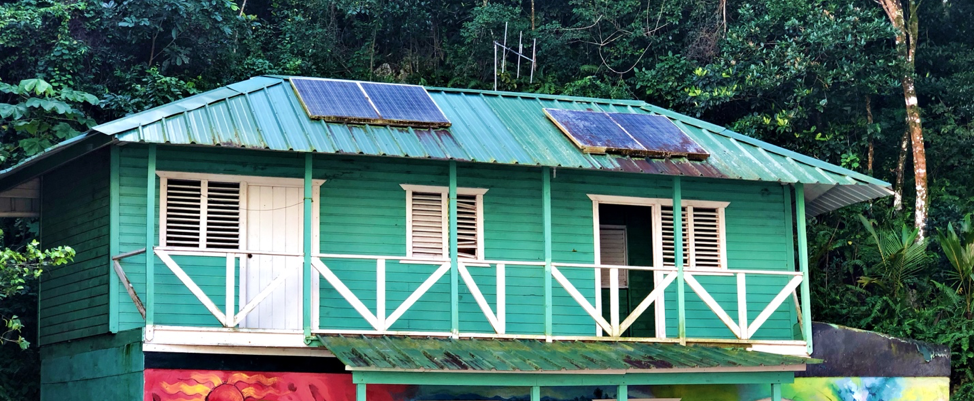
Written by: Heather Kerrison, Toronto Workshop Facilitator
Arguments for transitioning to solar power tend to differ in bustling cities from those in remote locations. Those of us privileged to have access to a reliable electricity grid may lack the urgency to transition our power sources. But, around the world we are seeing solar energy and microgrids bring power to remote locations. They either have unreliable grids that lose power often or have no available grid access.
What are Microgrids?
A microgrid is a type of localized electrical grid that can operate independently and is often powered by a mix of renewable energy sources. When communities are further from a large grid or power source, a microgrid can allow them to store, own and control their own supply of electricity.
Alternatives to ‘Macrogrids’
In remote areas, we are also seeing solar technology make massive differences to communities. They are utilizing solar power to access electricity to improve daily life.
Nearly a billion people worldwide do not have access to electricity. Those living in remote areas are prevented from receiving electricity from transmission lines. Off-grid solutions are a necessity to bringing energy access to such communities. According to World Bank figures in 2017, over 200 million in India lack access to electricity. The country is a leader in the off-grid solar market and is aiming for 40% of its total capacity to come from renewable sources by 2030.
Locations such as the Dominican Republic have a high number of Caribbean Expats using solar energy and energy storage as a way to deal with the high price of electricity and the unreliable, intermittent grid power. These choices are rarely based in a preference for living green, but are rather seen as a necessity for having a reliable source of energy.
I visited Samana Province of the Dominican Republic and many community members expressed how the expense and unreliability of the electricity grid had pushed them to move towards alternatives. While visiting the Los Haitises National Park, I was able to observe a remote guard station, where guards stay during two-week rotations protecting the area. The guard station is topped with solar panels which allow them to have access to electricity.

Solar Powered guard house at Los Haitises National Park in Dominican Republic. Photo by Heather Kerrison.
Power for the future
Here in Canada, over 200,000 people are not connected to the electrical grid or natural gas supply. We are also seeing an increase in extreme weather events and disasters caused by climate change that often lead to a disruption in power supply. Large power grids connect all buildings to a centralized system, which means disruption can affect everyone and everything.
A 2016 report from Green Tech Media indicated that more than 1,900 microgrid projects were underway that year.
In Canada, the federal government is working with remote communities to not only create options that are greener but bring a sense of relief to communities that battle to have reliable sources of power, particularly without using diesel.
Kiashke Zaaging Anishinaabek, also known as Gull Bay First Nation, has a new electricity system designed to reduce the community’s reliance on diesel generators. It is Canada’s first fully integrated remote renewable energy-storage micro grid.

Photo via Northern Ontario Business.
The project was funded by various government and private sources. These projects are a win-win for the communities and the environment. We can act to displace the use of fossil fuels while allowing off-the-grid communities to thrive knowing that they will have a cleaner future and more energy sovereignty.
As we move towards renewable energy sources for a future devoid of fossil fuels, it’s equally important to realize the potential of renewable energy sources to offer power solutions in remote locations and communities.
The necessity of solar power
The amazing thing about harvesting sun or wind energy is that it can be done anywhere and can provide a sense of security and autonomy to communities, while improving their quality of life. As we continue to expand micro grid projects worldwide, not only are we creating a greener world thriving on renewable energy, we are bringing connection and stability to communities that previously lacked these necessities.

